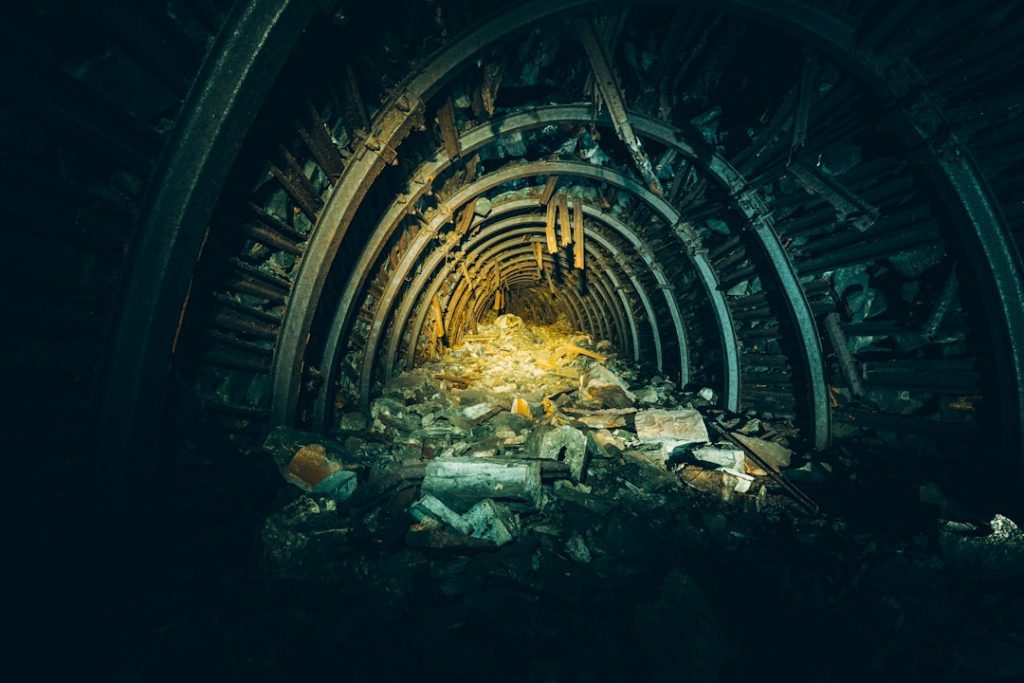Coal has been a significant energy source for centuries, with its usage significantly impacting the environment. In response, governments worldwide have implemented regulations to control and mitigate the negative effects of coal production and consumption. These regulations aim to protect the environment, public health, and natural resources while ensuring a stable and reliable energy supply.
They cover various aspects of coal production and use, including mining, transportation, power generation, and emissions control, setting standards for air and water quality, waste management, and land reclamation. The goal is to balance meeting energy needs with minimizing coal’s environmental impact. The regulatory framework surrounding coal is complex and multifaceted, involving multiple government agencies, industry stakeholders, and environmental groups.
These regulations continuously evolve to keep pace with technological advancements, scientific research, and changing societal values. Effective enforcement requires collaboration and coordination among different levels of government, as well as clear communication with the public and industry. While coal regulations have made significant progress in reducing environmental harm, they face challenges in implementation and enforcement.
Understanding the impact of coal on the environment, the role of government in regulation, and the challenges and opportunities for future coal regulations is essential for addressing these issues effectively.
Key Takeaways
- Coal regulations are essential for protecting the environment and public health from the negative impacts of coal production and use.
- Coal has a significant impact on the environment, contributing to air and water pollution, deforestation, and greenhouse gas emissions.
- Government plays a crucial role in regulating coal through policies, standards, and enforcement to ensure environmental protection and public health.
- Balancing the need for energy with environmental protection is a complex challenge that requires careful consideration and strategic planning.
- Implementing coal regulations faces challenges such as resistance from industry, economic impacts, and the need for technological advancements, but it is crucial for a sustainable future.
The Impact of Coal on the Environment
Extraction and Mining
Coal mining has devastating effects on the environment, including deforestation, habitat destruction, soil erosion, and water pollution. The release of methane during mining contributes to greenhouse gas emissions and climate change.
Transportation and Combustion
The transportation of coal via trains and ships can result in accidents and spills that harm ecosystems and wildlife. When coal is burned for power generation, it releases a variety of pollutants into the air, including sulfur dioxide, nitrogen oxides, particulate matter, and mercury. These pollutants can cause respiratory problems, cardiovascular disease, and premature death in humans, as well as acid rain, smog, and haze in the environment.
Disposal and Cumulative Impact
The disposal of coal ash, a byproduct of burning coal, can contaminate water sources with heavy metals and other toxic substances. Furthermore, the extraction and combustion of coal contribute to land degradation, water scarcity, and biodiversity loss. The cumulative impact of coal on the environment is significant and far-reaching, affecting not only local ecosystems but also global climate patterns.
The Need for Regulation
As a result, there is a pressing need for stringent regulations to minimize the environmental harm caused by coal production and use.
The Role of Government in Regulating Coal

Government plays a crucial role in regulating coal to protect public health and the environment. Federal, state, and local agencies have established laws, policies, and standards to govern various aspects of coal production and use. These regulations cover mining safety, air and water quality, waste management, land reclamation, emissions control, and more.
Government agencies such as the Environmental Protection Agency (EPA), the Department of the Interior, and the Department of Energy oversee the implementation and enforcement of these regulations. They conduct inspections, issue permits, set emission limits, and impose penalties for non-compliance. In addition to setting standards and enforcing regulations, government agencies also conduct research, provide technical assistance, and engage with stakeholders to develop effective strategies for managing coal-related environmental issues.
They work with industry partners to promote innovation and best practices that reduce the environmental impact of coal while ensuring a reliable energy supply. Government also plays a role in educating the public about the risks associated with coal and promoting clean energy alternatives. By taking a proactive approach to regulating coal, government can help mitigate its negative effects on the environment and public health.
Balancing Environmental Protection and Energy Needs
| Metrics | 2018 | 2019 | 2020 |
|---|---|---|---|
| Renewable Energy Production (TWh) | 2,500 | 2,800 | 3,200 |
| CO2 Emissions (million metric tons) | 5,000 | 4,800 | 4,500 |
| Protected Natural Areas (sq km) | 100,000 | 105,000 | 110,000 |
One of the key challenges in regulating coal is balancing environmental protection with energy needs. Coal remains a significant source of energy for electricity generation and industrial processes in many countries. It provides a reliable and affordable power supply that supports economic growth and development.
However, the environmental impact of coal production and use cannot be ignored. As a result, policymakers face the challenge of finding a balance between meeting energy demands and minimizing environmental harm. To address this challenge, governments have implemented various strategies to promote cleaner coal technologies and reduce emissions from power plants.
These include setting emission standards for pollutants such as sulfur dioxide, nitrogen oxides, mercury, and particulate matter; promoting the use of scrubbers, filters, and other pollution control technologies; investing in research and development of carbon capture and storage (CCS) technology; and incentivizing the use of renewable energy sources such as wind and solar power. By adopting these measures, governments can help reduce the environmental impact of coal while ensuring a reliable energy supply.
The Challenges of Implementing Coal Regulations
Despite the efforts to regulate coal, there are several challenges in implementing these regulations effectively. One challenge is the complexity of coal regulations, which involve multiple agencies at different levels of government. This can lead to overlapping jurisdictions, conflicting standards, and bureaucratic inefficiencies that hinder enforcement efforts.
Another challenge is the resistance from industry stakeholders who may view regulations as burdensome or costly. This can lead to legal challenges, lobbying efforts, and non-compliance with environmental standards. Furthermore, monitoring and enforcing compliance with coal regulations can be resource-intensive for government agencies.
Limited funding, staffing shortages, and technical capacity constraints can hamper their ability to conduct inspections, review permit applications, and respond to violations in a timely manner. In addition, public awareness and engagement are crucial for effective implementation of coal regulations. Educating communities about the risks associated with coal production and use can help build support for regulatory measures and encourage public participation in environmental decision-making.
The Future of Coal Regulations

Evolution of Clean Energy Technologies
As clean energy technologies continue to evolve, there will be increasing opportunities to reduce the environmental impact of coal through innovation and investment in cleaner coal technologies such as Carbon Capture and Storage (CCS). Governments will also need to consider the social and economic implications of transitioning away from coal toward cleaner energy sources.
Supporting Affected Communities
This may involve supporting affected communities with job training programs, economic diversification initiatives, and infrastructure development. By doing so, governments can mitigate the negative impacts of transitioning away from coal and ensure a smoother transition to cleaner energy sources.
International Cooperation and Climate Action
International cooperation will play a crucial role in shaping the future of coal regulations. Climate change is a global issue that requires coordinated action among countries to reduce greenhouse gas emissions from all sources, including coal. International agreements such as the Paris Agreement provide a framework for countries to work together to limit global warming and transition toward low-carbon energy systems. By collaborating on research, sharing best practices, and setting common standards for emissions reduction, countries can accelerate progress toward more sustainable coal regulations.
Finding a Sustainable Solution
In conclusion, regulating coal is essential for protecting the environment and public health while meeting energy needs. The impact of coal on the environment is significant and multifaceted, requiring comprehensive regulations that cover all stages of production and use. Government plays a critical role in setting standards, enforcing regulations, promoting innovation, and balancing environmental protection with energy needs.
However, there are challenges in implementing coal regulations effectively due to their complexity, industry resistance, resource constraints, and public engagement. The future of coal regulations will be shaped by technological advancements, international cooperation, policy developments, and societal attitudes toward energy and the environment. Finding a sustainable solution will require continued collaboration among governments, industry stakeholders, environmental groups, and communities to promote cleaner coal technologies while transitioning toward low-carbon energy systems.
By addressing these challenges and opportunities proactively, we can work toward a more sustainable future where energy needs are met without compromising the health of our planet.
FAQs
What are coal regulations?
Coal regulations refer to the laws and rules that govern the mining, production, transportation, and use of coal. These regulations are put in place to ensure the safety of workers, protect the environment, and mitigate the impact of coal on public health.
Why are coal regulations important?
Coal regulations are important because coal mining and use can have significant negative impacts on the environment and public health. Regulations help to minimize these impacts by setting standards for emissions, waste disposal, and worker safety.
What are some common coal regulations?
Common coal regulations include air and water quality standards, mine safety regulations, emission limits for power plants, and regulations for coal ash disposal. These regulations are enforced by government agencies at the federal, state, and local levels.
How do coal regulations impact the coal industry?
Coal regulations can impact the coal industry by increasing the cost of production, requiring investments in pollution control technology, and limiting where and how coal can be mined and used. These regulations can also drive innovation and the development of cleaner coal technologies.
Who enforces coal regulations?
Coal regulations are enforced by various government agencies, including the Environmental Protection Agency (EPA), the Mine Safety and Health Administration (MSHA), and state environmental and labor departments. These agencies conduct inspections, issue permits, and levy fines for non-compliance.



